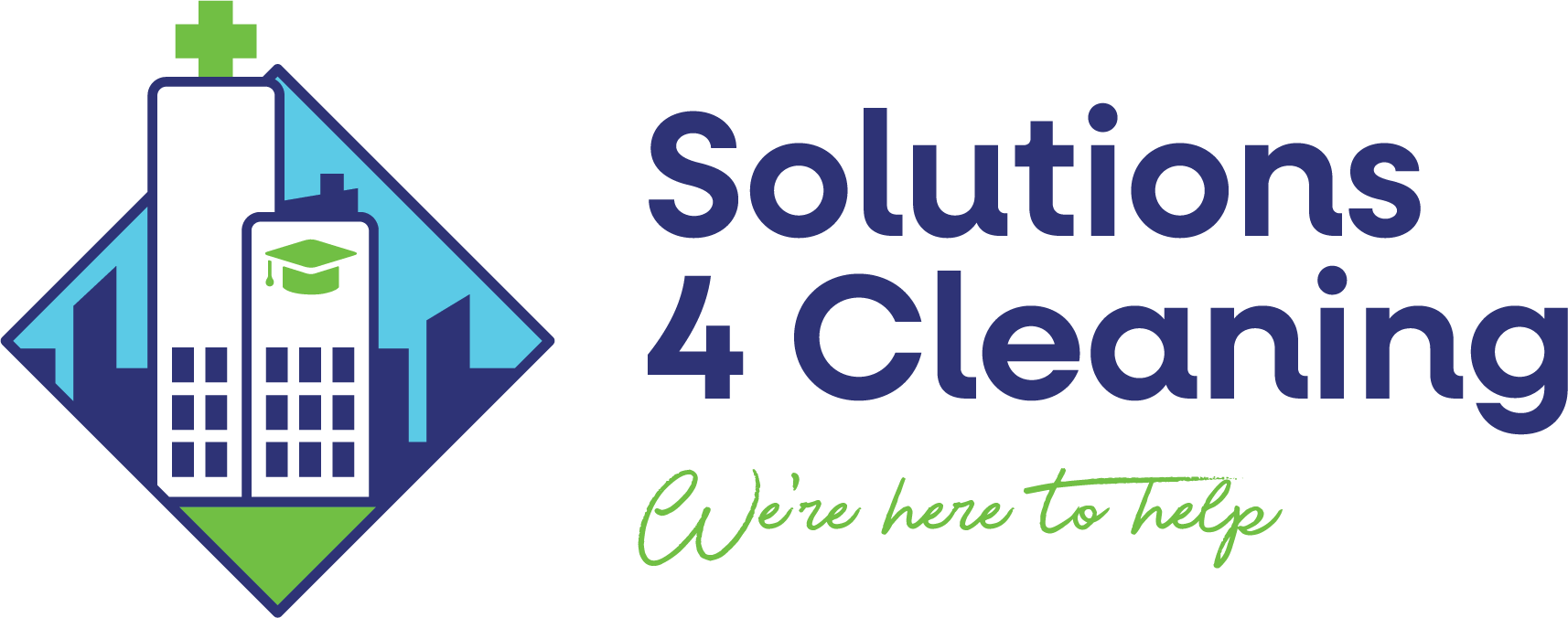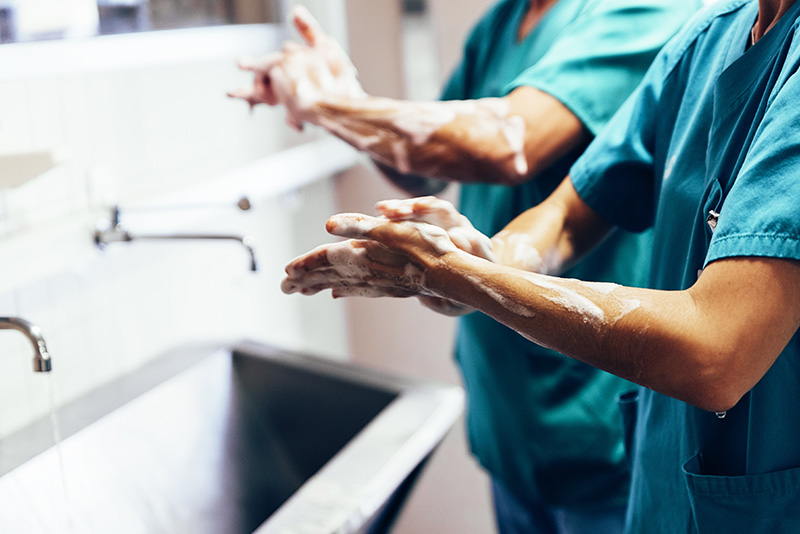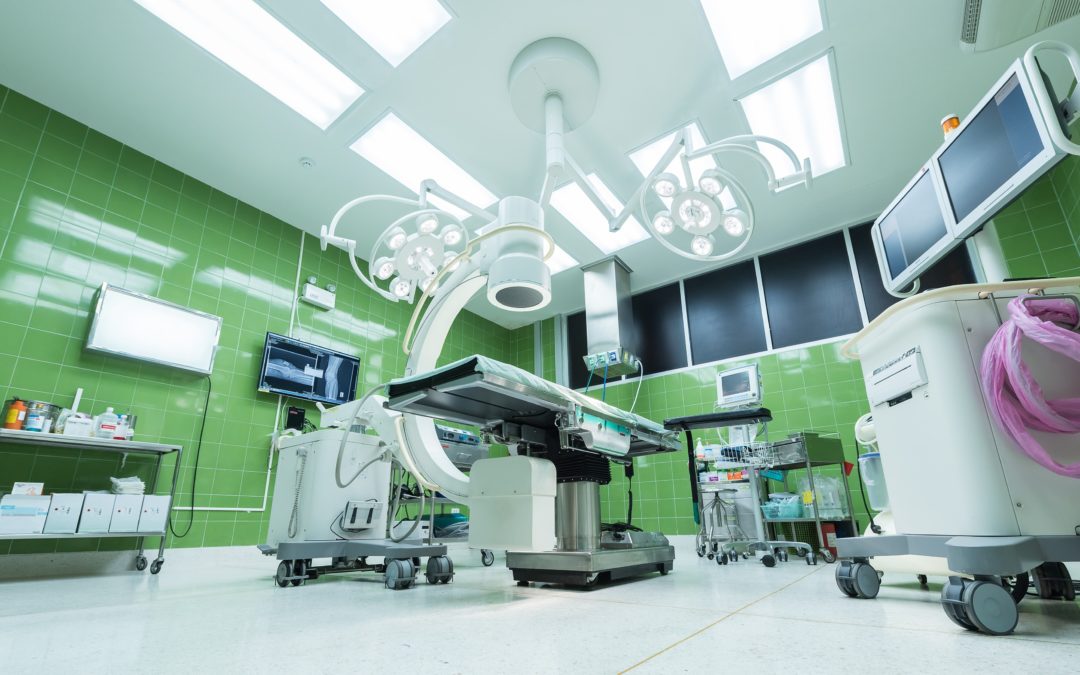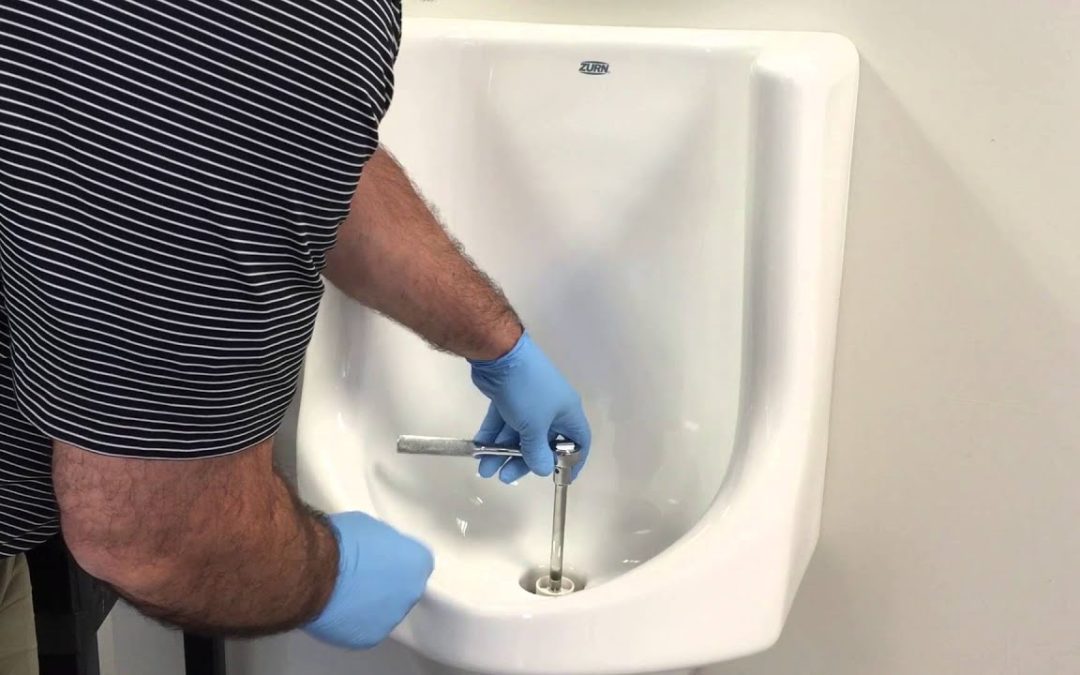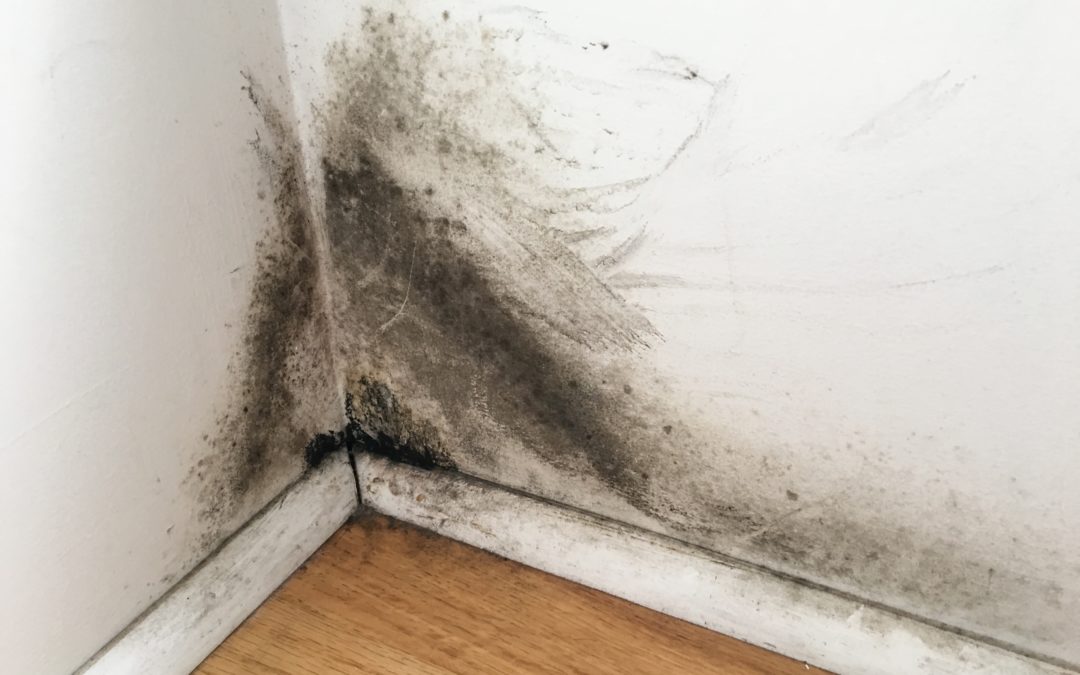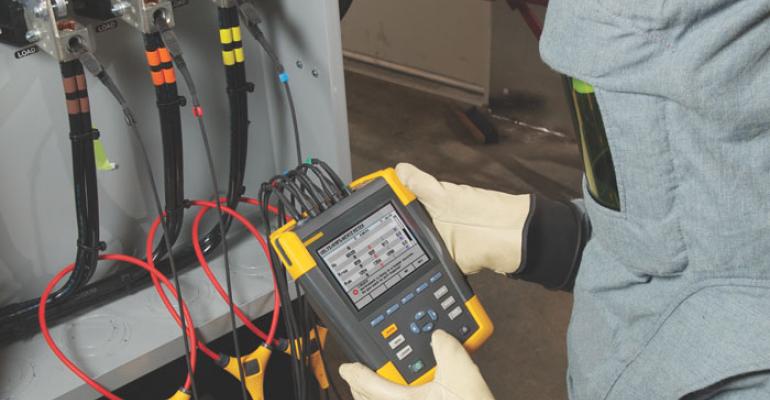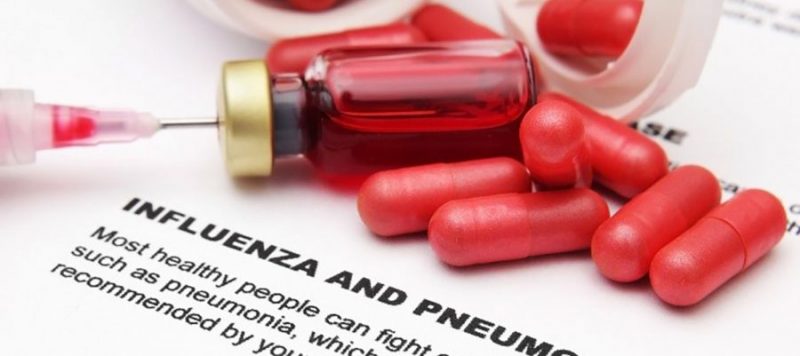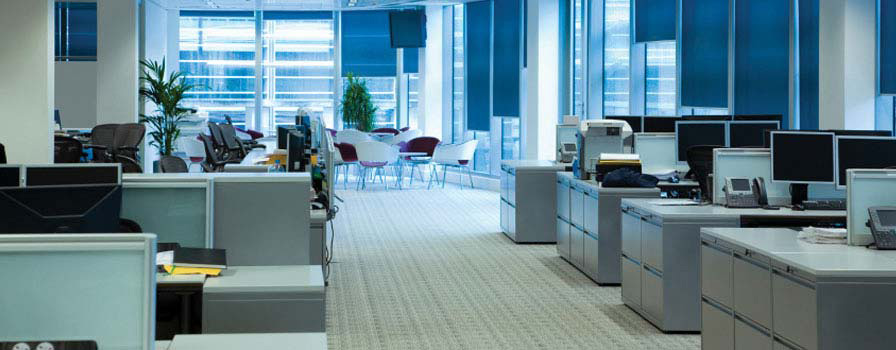It’s almost that time of year again .
And before we all go off on our merry way to enjoy more food and drink than we’d care to admin, I just wanted to take a moment to say thank you for being with us in 2019.
Whether as one of our friends, family members, valued clients or just a part of our network, we are very grateful for your support, patronage and some laughs along the way.
We hope your year has been prosperous and fulfilling, and that 2020 is gearing up for more of the same (or even better again!)
Thank you once more and all the best in the New Year,
Dave
Feeling foggy with the flu? Try our fogging service!
Many of you may have missed (or purposely avoided) reading my last article regarding the flu epidemic that it looked like we may be facing in 2019.
Well, can I just say that it’s not just a warning in some blokes article anymore…
It’s here!
By the end of the first week of April, we had already reached half of our 2018 total of flu cases, and in Queensland alone there had been a reported 7,289 diagnosed cases of the flu. Professor Robert Booy, Chairman of the Immunisation Coalition, has said that this season might be more severe as a result of the relative mildness of the 2018 flu season, which has seen us regular folk not build up the natural immunities that we normally do year to year.
For me, it all comes down to the cleanliness of where we work and play. While the flu is always an unavoidable reality of this season, it’s the uncontained spread of germs from those who are afflicted that cause the real headaches. Enclosed areas that house a significant population of people, such as hospitals, offices, schools and aged care homes, are all an absolute feeding ground for flu germs. When one person gets ill in these environments, you’ll very soon find those around them displaying similar symptoms (if not managed correctly). This is due to the germs not being able to escape from the space as easily as an open area.
So how can we combat this? What can we possibly do to reduce the risk of sickness when we spend a large amount of our lives in these high risk areas?
The solution for cleaning (see what I did there?) is our fogging service.
When you engage our fogging service, we fill your high risk enclosed areas, such as a school classroom, medical centre, childcare building or an office, with a cold fog of disinfectant. The disinfectant we use is a Hospital Grade Disinfectant approved by the Therapeutic Goods Administration. Our disinfectant is silicon based, which bonds to the contacted surfaces, creating a barrier that continues to kill microorganisms for 28 days. This is made possible by the microbial qualities of the product, which physically puncture the cell walls of the microorganisms to instantly kill it. In comparison, other hospital grade disinfectants simply use toxic kill to poison the microorganism. This type of disinfectant is what allows the microorganisms to build a resistance over time – meaning your regular cleaning has a quickly diminishing effect.
Our fogging service allows the disinfectant to penetrate into all areas, cracks and crevasses and will completely cover all surfaces.
Interested to find out more about the testing that the disinfectant has gone through? We’ve got you covered below – elsewise, read on!
Product Testing
Toxicology Testing
· Acute Dermal Toxicity Study OEDC 402
· Acute Inhalation Study OEDC 403
· Acute Dermal Irritation/Corrosion Study OEDC 404
· Acute Eye Irritation/Corrosion Study OEDC 405
· Acute Skin Sensitisation Study OEDC 406
· Acute Oral Toxicity Study OEDC 425
Efficacy Testing
· TGA Disinfectant Test
· 1 Day Challenge Testing – MRSA
· 14 Day Challenge Testing E coli, Salmonella, VRE
· 14 Day Challenge Test – Norovirus
· 28 Day Challenge Test – E.Coli, Salmonella, VRE
· Hard Surface Challenge Test – Clostridium Difficile
· Surface Testing – Aluminium – 1116.002-Al
· Surface Testing – Aluminium – 1124.001-Al
· Surface Testing – Carpet – 1116.002-Carpet
· Surface Testing – Linoleum – 1116.002-Linoleum
· Surface Testing – PVC – 1116.002-PVC
· Surface Testing – Stainless Steel – 1116.002-Steel
· Surface Testing – Untreated Wood – 1116.002-Wood
· Virucidal Efficacy Suspension Test – Swine Influenza Virus (H1N1)
Once the fogging service has been completed, we then do a test to measure our success and provide the data back to you. The test is carried out quickly, consisting of 10 random swabs which are placed into our portable tester. The swabs give off light which is measured and recorded as Reflective Light Units (RLU), which measures the energy given off by living organisms.
So the dimmer the light = the lower the RLU = the better the result.
How this can benefit your workplace
The answer is pretty simple – you can lower your risk of infectious illnesses.
By lowering your risk of infectious illnesses, you can ensure that this flu season has minimal impact on your workplace. The fogging service is a proactive measure to mitigate the risk of flu in your place of work to help you avoid the costs that come with associated sick leave.
When it comes to schooling, the fogging service assists with keeping kids at school for more of the year, reducing impact on parents and learning.
In summary, we are currently on track for the flu to affect us here in Queensland more than it has in recent years – or perhaps ever before! Doctors are encouraging us to help fight sickness by taking things a step further, rather than simply relying on your standard flu shot.
As a business owner, medical practice manager, or leading educator, you can do your part in the prevention of the flu this season. Call us today on 1300 860 832 or request a quote for our fogging service.
What role do your cleaners play in infection control?
Stay safe this flu season!
I know, I know – it still feels like Summer. So why am I talking about managing the spread of the flu and other sicknesses already?
Well, that’s because the flu is already here. And it’s spreading like wildfire. Just take a look around you. I can all but guarantee that somebody in your life right now has been struck down or is beginning to show the symptoms.
I’m not trying to start a fear campaign here, but these sort of outbreaks can get around crazy fast. And flu season is only just beginning!
So what can you do about it? Well, one of your first points of call should be to sort the prevention and control of infections in your workplace. It’s where you spend a third or more of your day most days after all!
Whatever your daily work setting is, from an office to health care facility or even a childcare centre, your cleaners (see Solutions 4 Cleaning for more information) should play an important role in managing the risk of infection to your staff and customers.
The role of your cleaner is to remove dust and microbes from the environment, effectively preventing or controlling any potential outbreaks. If you want to know what are the most vital considerations for your cleaning – well, you’ve come to the right place!
Here are 4 essential things that you and your cleaner should consider as part of any highly effective infection control in the workplace:
Equipment
Good quality, clean and well-maintained equipment is essential in commercial cleaning. We recommend the use of clean, colour coded cloths and mop heads which are laundered after each use, as this will minimise the risk of cross contamination. Other areas that are often overlooked are vacuum cleaners that have a HEPA filter. A HEPA filter helps to ensure that no dust, spores or fungi pass through the vacuum and go right back into the environment that you just removed them from. D’oh.
Chemicals or Cleaning agents
Having the right products to do the work is one thing – knowing how they work and how to use them effectively is another thing altogether. In my years of experience, I have encountered far too many cleaners who simply spray and wipe.
This effectively does very little to kill the microorganisms that are the real culprits in the spread of infections such as the flu.
Even the best hospital grade disinfectants need 10 minutes to sit on a surface to kill microorganisms like Norovirus (the dreaded cause of gastro) and even 3 min for Rhinovirus (our most common cause of the common cold).
Also essential to the process of infection control is understanding which products simply clean or break down solids – and which do the actual killing of microorganisms.
Quite often an item like a door handle might need to be treated twice.
First with a general cleaner, in order to break down fats and solids;
And then with a hospital grade disinfectant, which is applied and left to air dry to kill the microorganisms.
If your cleaners don’t understand the process and the products, they might be leaving you exposed to unwanted germs. If you want a professional team you can rely on to take care of the job properly the first time, every time – then give us a call on 1300 860 832 or get in touch with us here.
Regular Cleaning
Regular Cleaning is essential to staying on top of the potential spread of infection.
This is why it is essential to talk to your commercial cleaners prior to engaging them. A good cleaning company will listen to your wants and needs, as well as get an idea of your budget. Then they can go away and create a schedule specific tailored to your workplace. A typical office that is getting a twice weekly clean might get high risk areas like kitchens and bathrooms cleaned twice weekly, where other jobs like the wiping over of workstations might only get done once a week.
It’s totally and completely up to you – and that is why you need a cleaner who will listen and recommend accordingly, as opposed to simply going all gung ho on your office, medical practice or warehouse.
Periodic Cleaning
Periodic Cleaning is essential to ensuring your workplace is not only kept healthy, but also maintained properly.
Regular mopping, for example, will not be sufficient to maintain high traffic areas like entrances. Over time, rubber from shoes can build up and starts to hold onto all that dirt and grime from the outdoors. The only way to remove it is through a thorough clean with a floor scrubber.
This floor scrub will maintain both the appearance and cleanliness of the area. Talk about two birds!
Periodic cleaning should also include thorough dusting, thorough cleaning of fridges, cupboards, under appliances and hard to reach areas.
How Often Should I Have My Workplace Cleaned?
Every day, your office, warehouse, medical practice or shop front is a hive of activity. It sees 10x, hell, even 100x, more movement and activity than the average residential home does. With that activity comes an increased load of waste, residue and germs.
You know that it needs to be cleaned regularly and that it’s not something household cleaning products and tools can do. But how often should you get it cleaned?
Well, that depends on four factors: your workplace size, business type, budget and layout.
Workplace Size
The size of your workplace and the number of employees it contains is certainly one of the most important factors that will determine how often the space should be cleaned. A larger office, practice or warehouse with more than one story will need more cleaning, but one with under ten employees can be cleaned once a week or every two weeks. Regardless of how big or small your workforce and workplace is – the bathroom and kitchen should be cleaned daily.
Business Type
The type of business you’re in will determine how often your space requires cleaning. For example, a hospital would need to be sanitised daily or even hourly. A corporate or open plan office might not need to be cleaned as often, but the area where clients and managers meet should be kept in a neat and tidy state to make a good impression.
You can find out more about our cleaning services for healthcare and medical practices here.
Budget
The frequency of cleaning often also depends on the budget that you would like to allocate. A bi-daily cleaning service could offer a lot of value to you and your employees, keeping everyone healthier first and foremost, as well as happier. Having a clean workspace has been proven to increase happiness and productivity for your employees.
However, if you can’t afford a cleaner that often, then that is perfectly fine! As an example, we have clients where we are on-site each and every day, twice a week or even just once per fortnight. We budget to get as much of the most important work done in the time that we have onsite.
Layout
An open plan office with carpeting can be vacuumed once a week, but a showroom area with a lot of glass or mirrored surfaces often needs to be kept spotless with daily cleaning. An office with many windows would also require frequent cleaning, as a dirty windowpane is extremely easy to spot – and keeps the natural light from coming through. What a way to undo all of the benefits that glass windows and partitions bring to your workplace!
When it comes to your work space, keeping the space clean is not only hygienic – it also impacts your employee’s productivity and their comfort working in such an area. A clean office, medical practice or shop with sparkling windows, a substantial flow of air throughout the rooms every day and no unpleasant smells will be one any person would be glad to work in!
If you’re looking to assess your cleaning needs, or need a new provider that is flexible to your hours of operation and specific needs – then be sure to reach out to us today on 07 3160 7306 or by visiting our Request a Quote page.
I’ve Got Waterless Urinal Systems – How Do I Manage Them?
So you’ve gone waterless with your urinals. Congratulations! Water isn’t an infinite resource and any business reducing their consumption is making a smart decision (and one that’s bound to save money). A single waterless urinal could save up to 133 000 litres of water per year, depending on the size of your workforce and who’s using your facilities.
You also need to keep in mind that it’ll have an impact on your electricity bill, as you now won’t require energy to move water to and from your systems. Double win!
Now that water isn’t a part of the equation, you might be wondering how you can keep this area clean and hygienic – not to mention odour free.
Well, allow us to help. Here’s everything you need to know about waterless urinal maintenance.
Types Of Systems
Waterless urinal systems can operate using an oil lock system, a biological system or mechanically.
In oil lock systems, urine passes through a sealing liquid which is less dense than it is. The sealing fluid sits on top of the urine, trapping it and preventing odour from passing through. In a biological system, a block containing microorganisms absorbs and ‘digests’ the urine. Finally, in a mechanical system, a hollow ball valve of a lower density than the urine is used so that it blocks the urine after it passes through.
Each of the three systems have their own pros and cons, but what they all have in common is that a standard cleaning job won’t be enough to clean them. While you might be able to clean the outside of the urinal using disinfectant products, the internal elements are dry and can be difficult to reach.
Furthermore, waterless urinal systems using oil or biological systems are often not able to come into contact with water or traditional cleaning products. These systems need to cleaned using a very particular method and products.
So what do you do?
You trust the professionals.
A waterless urinal system only saves you money and helps the environment if its functioning as it should be at all times. It’s for this reason that we advise that you get a professional urinal cleaning and maintenance team to do the job for you. Our Solutions 4 Cleaning team members are all trained in managing any sealants, valves and cylinders the system could have, topping up necessary sealants when they run low and removing, cleaning and replacing the trap without damaging it, as well as flushing any lines that require it.
So all you really need to do to effectively manage your waterless urinal systems is contact us on 07 3160 7306 and set up a regular appointment for our urinal cleaning Brisbane service.
We’ll take care of the rest, leaving you to enjoy a hygienic and odourless waterless urinal system that works for your business time and time again.
The Damaging Effects Of Mould In The Workplace
Dampness and mouldy environments in the workplace can be the cause of a lot more health issues than you might immediately think! Mould and other fungi can easily grow in damp indoor spaces without you noticing. Along with mould, these spaces are most likely carriers of dust mites and bacteria. The mould spores, in addition to these mites and bacteria, can cause serious damage to vital parts of your body such as your eyes and lungs.
To put it quite frankly, mould is probably one of the biggest health risks in the workplace, especially when not addressed quickly and effectively. So if you can see, or fear that there may be, some mould in or around your work space – it can pay to call in a commercial cleaner like us here at Solutions 4 Cleaning immediately. Better to be safe than sorry.
If this sounds like you – please contact us here and we’ll get out to your workplace urgently.
But let’s say, the mould has been there for a while. How can you tell if it’s already causing health issues? Well, the immediate symptoms that this form of fungus is causing havoc starts with the simple things – the kind of symptoms that could easily be written off as some other illness. For example, if you’ve been noticing some nasal stuffiness, coughing and wheezing, eye irritation or even headaches in yourself or your employees – this may be the result of mould in your workplace.
The health risks of mould in the workplace vary from person to person – but you should be particularly concerned for anybody in your organisation that suffer from ailments such as severe allergies, immune-compromised people and people with chronic illnesses. In some cases, serious infections in their lungs, particularly those with obstructive lung disease, may be detected when exposed to mould.
Even though it has proven difficult to indicate hard evidence of precise cause-and-effect, it may seem quite elusive.
Here at Solutions 4 Cleaning, we want to be sure that our subscribers and clients have the best information possible to identify possible symptoms caused by mould – with the hope they can be identified and treated far more quickly. We have seen the result of letting mould in the workplace go untreated, and it is NOT pretty. So, we have compiled a brief list of health conditions associated with exposure to mould as well, followed by some preventative measures you can take right now..
Allergies:
One of the points we introduced in the opening is the respiratory effects of mould. Symptoms usually include sneezing, irritation of the mouth and throat as well as red and itchy eyes causing an unpleasant working environment for those affected by this. Employees who suffer from allergies may suffer as mould can trigger asthma-related symptoms such as shortness of breath. These allergies aren’t just respirated. In some cases, it has been found that mould has caused skin irritation, dizziness and fatigue.
Hypersensitivity pneumonitis:
HP is a rare disease or disorder caused by an immune system’s response to inflamed lungs after an inhaling trigger such as dust, fungus, mould or chemicals. This development is often mistaken for pneumonia, however, it can not be treated with antibiotics and can thus cause severe, permanent damage to an individual.
Asthma:
Asthma is a more common lung disease that affects millions of people worldwide. The developed inflammation in response to sensitizing or irritating exposure hinders airways in the individual with asthma. When exposed to irritations, these people can experience shortness of breath, wheezing and tightness in the chest. Mould is one of the contributing causes of this.
So what are the best ways to prevent you having to keep your eye out for these kind of health issues within your employees?
Well to start with, you should definitely perform regular building inspections and promptly fix any roofing, windows and water system issues that could lead to the damp conditions that are perfect for mould.
On a day to day basis, you should ensure to control the humidity levels within your working areas.
And of course, a good commercial and office cleaning service.
A good commercial cleaner regularly checking and preventing the conditions conducive to mould is THE most effective way to avoid any type of fungus. A good cleaner knows which places attract dampness and mould and will be able to provide you with effective solutions such as dusting, disinfecting several areas, removing soaked upholstery and so forth. Most cleaners will be able to remove your mould, but it is about being proactive and preventative. A good cleaner will stop mould from ever becoming an issue in your workplace, and ensure any existing mould is dealt with conclusively. You can read more about our approach to mould cleaning and prevention here.
Overall, it is pretty common sense that you want to avoid any trace of mould in your workplace at any cost. Well not any cost – you still want a reasonably priced quote from a reputable provider **wink wink, nudge nudge**. We would all never put the wellbeing of our employees at risk – after all, they’re the heart and soul of a successful business, right?
If you’re looking for a commercial cleaning service that can address mould in your office, healthcare facility or any kind of workplace – give us a call on 07 3160 7306 or request a quote today.
What is testing and tagging and do I need it?
We are excited to announce that Solutions 4 Cleaning is now qualified to complete test and tag services in addition to our commercial, office and healthcare cleaning services. This is especially helpful for our clients who require all cleaning and maintenance work to occur outside normal business hours. Solutions 4 Cleaning are able to conduct our test and tag services alongside any of our existing cleaning services – with minimal disruption to you and your workforce.
Electrical safety is and should always be a number one priority for all Australian businesses.
Inline with the Queensland Electrical Safety Regulations and the Australian Standard AS/NZS 3760: 2003, test and tag in office workspaces should be conducted every 5 years, or, all circuits need to be protected by a safety switch.
So what exactly is testing and tagging? Well, it’s the number one method of identifying dangerous electrical appliances. Testing and tagging commercial services go hand in hand as the best way to make sure your office is safe for everyone. As long as testing and tagging are included in your electrical safety plan, any issues with equipment can be diagnosed, resolved or removed early on. Once an appliance has been tested, a tag is placed on it to confirm that it has been tested, who tested it, the test date and when the next test is due. A record of these tests is kept as part of your overall OH&S risk management documentation.
Having your electrical equipment tested and tagged will help to identify and prevent possible electrical hazards. If any malfunctioning electrical equipment is found, you can have it fixed or replaced before it becomes a danger. We have outlined additional features and costs involved in our Solutions 4 Cleaning Test and Tag service here.
In addition to test and tagging, it is recommended that all workplaces be fitted with safety switches or RCDs, and since the Wiring Rules AS3000:2007 update, RCDs (safety switches) are now required to be installed on all new circuits which supply power points. The use of an RCD however, is no excuse for complacency when it comes to the regular inspection and testing of your electrical appliances.If it’s time again for your electrical equipment to be tested and tagged, feel free to contact our Solutions 4 Cleaning team to organise your test and tag at the best time for your company and your employees.
We are compliant with AS/NZS 3760 Australian Standards, with a Restricted Electrical Contractors Licence ( Licence number 85328). You can read more about our Test and Tag Service by visiting our Test and Tag Brisbane page.
Is your office ready for the flu season?
The cool night air blows through the trees. Windows and doors of homes are closed. Blankets are being pulled out of storage and we scrummage through the drawer to find our favourite jumper. Winter is almost here. It is a wonderful time when we get to snuggle under blankets, eat some wonderful soup and sit in front of a log fire or warm heater.
But, winter also brings with it the dreaded influenza virus. There are many reports that state that we could be facing a flu pandemic this year. The Queensland Times reports “Already this year the number of influenza cases across West Moreton has tripled compared with the same period last year and residents are being told to organise vaccinations this week.”
“The infection causes an average of 13,500 hospitalisations each year and more than 3,000 deaths, according to the Australian Federal Health Department.” Helen Spelitis from the Queensland Times reports.
Many businesses will be impacted with staff away sick, or staff coming to work and spreading the virus. Businesses will suffer from reduced production, increased absenteeism, and reduced staff morale. Businesses must be vigilant in ensuring that they do all they can to prevent the spread of this virus.
How Can I Protect My Staff?
There is a lot of advice about staff vaccinations and keeping sick staff at home to prevent the spreading of the virus. While this is good advice it is not the only option in making your workplace safe. The other option is to ensure that the workplace is hygienically cleaned regularly.
Karen Rowan, Health Editor for Live Science wrote an interesting article in November 2012. The below is an extract from this:
“During cold and flu season, we’re inundated with messages to wash our hands frequently. But to avoid getting sick, it’s also important that we stop touching our noses and mouths all the time, a new study shows.
Every time people touch their mouth or nose, they transfer bacteria and viruses between their face and their hand. This “self-inoculation,” or transfer of germs from one body part to another, is a primary way that germs wind up spreading from contaminated surfaces to people’s faces, and from sick people to often-touched surfaces.”
She went on to say that researchers found that people touched their faces an average of 3.6 times per hour, and common objects an average of 3.3 times per hour.
“There are many opportunities in between hand-washing episodes for people to re-contaminate their hands,” said study researcher Dr Wladimir Alonso, a global health researcher at the National Institutes of Health in Bethesda, Md.
This research proves the importance that all surfaces need to be cleaned and sanitised regularly. The phone piece that you breathe into, the keyboard that you type on, the door handle that everyone touches. All surfaces in your workplace need to be sanitised to prevent the spread of this very contagious virus.
What are your cleaners doing to prepare your office for this coming flu season?
Are they using the right products in the correct manner?
Are they working in a way that minimises the spread of germs?
Is their equipment well maintained and cleaned regularly?
Do they have a hygiene plan in place?
If your cleaners cannot satisfy you with their answers to the above question then you’d better find a cleaning company that can.
Solutions 4 Cleaning takes its knowledge of cleaning medical facilities and applies it to an office environment. Our focus is ensuring that your workplace looks clean and is healthy while considering your budget. By working with the right products in an efficient manner we can deliver a superior clean providing you with a happier, healthier, more productive workplace.
Solutions 4 Cleaning believe that to prevent the spread of flu or other illnesses through your workplace a hygiene plan is imperative.
What Is a Hygiene Plan?
A hygiene plan is a customised cleaning plan for your specific workplace. It will put into action a preventive cleaning process to reduce the transfer of germs.
Solutions 4 Cleaning will:
• Discuss your current cleaning situation.
• Do microbial swabbing to determine problem areas in your workplace.
• Supply you a detailed hygiene plan that will look at reducing the risks of microbial transfer.
We’re offering 10 free hygiene plans for the month of May. So, call us today and we will put your plan in place.
Don’t let winter impact your business. Make your workplace a healthy environment for you, your staff, and your customers.
Couriers, cleaners in firing line as government continues to fight the “black economy”
Courier and cleaning businesses look set to face greater regulatory burdens after the federal government outlined plans in its 2017 budget to extend measures in the fight against the nation’s $21 billion so-called “black economy”.
Tuesday’s budget papers saw the government suggest it could recoup $318 million in revenue through a plan to extend the taxable payments reporting system (TPRS) to contractors in the courier and cleaning sectors.
The scheme, which currently applies to the construction sector, compels businesses to report the individual and collective payments it makes to contractors each year to the Australian Taxation Office. Under the budget proposal, businesses in the courier and cleaning sectors would have to start collecting this information at the start of the 2018-19 financial year, in preparation to tell the ATO how much they are paying contractors from July 1, 2019.
Having this week released the interim report from its Black Economy Taskforce, the government also outlined plans in the budget papers to ban certain point-of-sales systems that could allow businesses to underreport their income, and also committed to measures for fighting multinational tax avoidance by extending pre-existing laws to companies using foreign partnerships and trusts.
Principal at Perigee Advisers, Lisa Greig, tells SmartCompany this year’s federal budget is “riddled with integrity measures” and will result in increased compliance burdens for many SMEs.
She says the plan to extend the TPRS, which comes off the back of a recommendation made to government in the Black Economy Taskforce interim report, is simply a matter of authorities looking at areas of non-compliance, and seeing which businesses they can place added scrutiny on.
“They’ve done their benchmarks and said, ‘who else we can tag with the contractors’ brush?’” she says.
While there is a concerted effort from the government to recoup funds from those operating outside of the tax system, Greig says unscrupulous providers are likely to find a way to continue to avoid paying tax.
Meanwhile, she says many small business owners are already confused by the complexities of compliance measures, and there’s not much being done to simplify matters.
“All the tweaks in the budget are adding to the compliance costs for SMEs,” she says.
On Wednesday, the government made the interim report from its Black Economy Taskforce, which was established in December, available for public consultation.
The report, led by taskforce head Michael Andrew, highlights that Australia has made “few inroads” in fighting the hidden economy, and current approaches tend to focus on symptoms of the problem, rather than the causes.
The taskforce made nine initial recommendations to government, including the extension of the TPRS to new sectors, as well as potentially developing tax or other incentives for small businesses to switch to “non-cash business model[s]”.
Marking the contracting and cleaning sectors as areas of significant risk, the report also devotes time to how government can shift community attitudes about the payment of tax.
The taskforce says community attitudes have the potential to undermine the fight against the black economy, with the idea that “everyone” takes cash under the table leading more to be tempted not to comply with tax law.
“Similarly, if people do not trust their tax authorities or have little faith in governments spending their tax dollars wisely, they may be reluctant to comply with their tax obligations,” the report observes.
Is Your Cleaner Up To Scratch?
As a business, you supply quality training for your team in their role. You invest time and money in your team to make sure they are more than capable of doing their job to a high quality and standard. A medical centre has qualified doctors, nurses, and medically trained administration staff. A school has qualified teachers, librarians, and guidance officers. They’d never consider hiring anyone that’s unqualified or untrained.
Well guess what, the chances are they do.
When was the last time you checked the credentials of your cleaner? Has your cleaner kept up-to-date with the latest cleaning methods? Are they familiar with the latest products on the market and which product to use on which surface? Do they hold the correct insurances relevant to your industry?
A cleaner, while mostly unseen, is an integral part of your team. Whether they are on-staff or contract cleaners, what they do impacts your team and your business.
On the 5th March 2015 FM Magazine interviewed Barbara Connolly of the Building Services Contractors Association of Australia. She stated ‘A common perception is that cleaning is the poor cousin of the facilities management sector, something anyone can do. No skill is required to vacuum a floor or empty a bin, a job completed after hours, out of sight, out of mind. Yet, the cleaning industry is worth some $4 billion annually to the Australian economy.’ She went on to say ‘Training is the key element to raising the standards and professionalising the industry.’
Businesses invest a huge amount of time and money on their team to ensure top results. Very few bothers to ask their cleaners what investment they are making in training and upskilling their team. Regarding the sub-contractor or the sole operator it is more likely to be very little. Some cleaners are cleaning today the same way they did ten years ago, and that’s a backward step for your workplace.
We encourage all businesses, schools, medical facilities, hospitality venues to book a meeting with your cleaner today. Ask them to show you:
- Evidence they follow relevant Australian guidelines and standards suitable for your workplace.
- How they keep up-to-date with the latest cleaning technologies, new cleaning methods and new products. Domestic cleaning products purchased from the supermarket shelf are not industry quality and won’t clean your workplace to a quality hygienic state. Cleaning is not just about removing the dirt that you see, it is also about removing the germs that you can’t see. Your cleaner needs to be using commercial grade products that sanitise as well as clean.
- Their knowledge on surface protection, (right products and methods so as not to damage fixtures and fittings). Ask them what products they are using to clean your workplace.
- How they minimise the impact on your business – their efficacies and cost savings to you. For example, working in a manner that minimises electricity consumption.
- They’ve the correct insurance cover for the work they do on your behalf. Beware, basic insurance covers mostly domestic and office cleaning only. Medical reception and administration areas is different from office and this needs to be reflected in their cover. Hospitality cleaning is also an independent cover. We recommend speaking with a reputable insurance broker.
- How they are investing in research and development. Do they subscribe to industry magazines, are they members of an industry group, do they attend industry meetings or seminars?
- How they invest in their cleaning team. Do they supply regular training, do they offer traineeships or opportunities for their team to upskill and become qualified?
Once you have asked these questions of your cleaner, then you need to decide if you want to continue to use them. If your cleaner cannot supply to you evidence of any of the above seven points, then you need to seriously consider looking for someone who can.
A proper cleaning company looks for better, more efficient, ways to work while achieving quality results. They stay up to date with policies, guidelines and compliance regulations and challenge their methods regularly to ensure quality and improvement in results.
Solutions 4 Cleaning management recognise our duty towards the Health and Safety of our employees and our clients. To achieve this goal, we have implemented a Health and Safety Management System that’s compliant with AS 4801: 2001. We adhere to a full range of stringent processes, executed with the appropriate resources. Our team truly care about the important cleaning services they supply to you. Contact Brisbane medical centre cleaning experts today.
